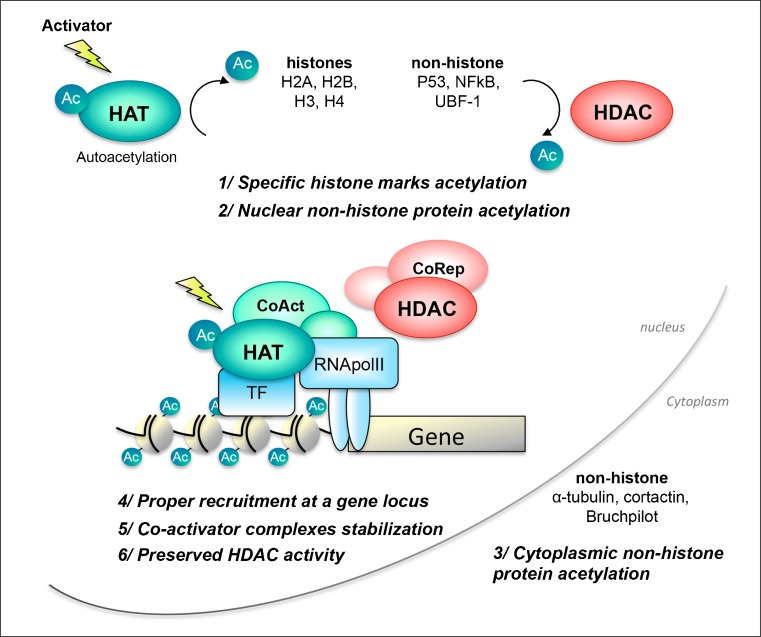Fig. 3.
Histone acetyltransferase (HAT) activation as a therapeutic strategy. Illustration of the beneficial effects of the use of a HAT activator at the cellular level (see ‘HAT Activation vs HDAC Inhibition as a Therapeutic Strategy’). The activation of the HAT preserves the “acetylation code” of nuclear and cytoplasmic proteins (1–3), along with a proper positioning at gene loci (4) and recruitment of coactivators (5). Importantly, this strategy will preserve the histone deacetylase (HDAC) activity surrounding gene loci (6), otherwise impaired when following an HDAC inhibition strategy. Therefore, as both HAT and HDAC activities are present, a correct acetylation turn-over is possible, allowing transcriptional proceedings, see [217]. Ac = Acetyl; NFκB = nuclear factor kappa B; UBF-1 = upstream binding factor-1; CoAct = coactivator; CoRep = co-repressor; TF = transcription factor; RNApolII = RNA polymerase II

